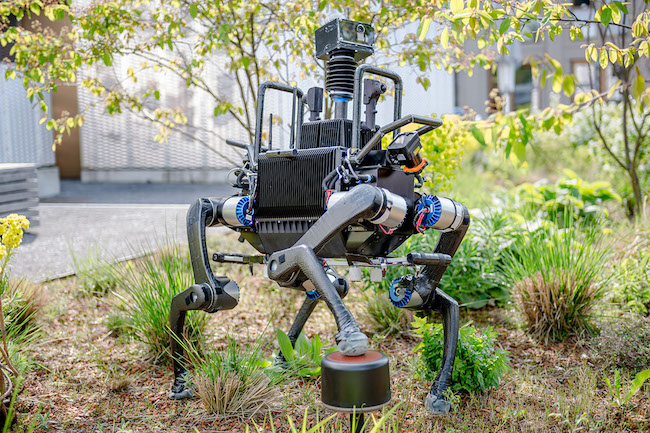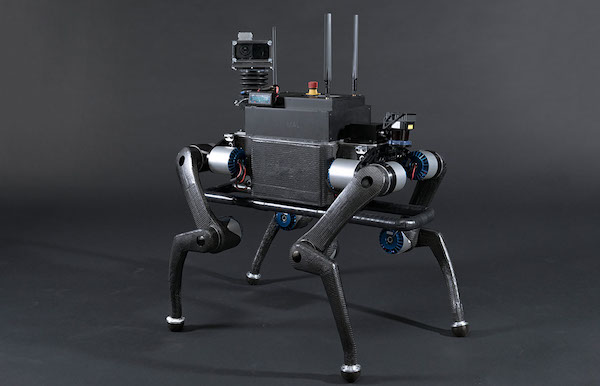
Swiss researchers have devised a new method for legged robots to follow high-level body velocity commands, run faster, and recover from falling in complex configurations.
In a new paper, published in Science Robotics (citation below), researchers at ETH Zurich in Switzerland describe a method for creating a neural network that translates simulation data to legged robots.
“In the present work, we introduce a method for training a neural network policy in simulation and transferring it to a state-of-the-art legged system,” the authors write, “thereby leveraging fast, automated, and cost-effective data generation schemes.”
The new approach was used to teach ANYMal, a quadrupedal robot, “locomotion skills that go beyond what had been achieved with prior methods.” After training, the robot was able to get up again after knocked down, be more energy-efficient and beat its speed-walking record by 25 percent.
What is a robot?
The full hybrid simulator that the researchers used was running at nearly 500,000 time steps per second, which allowed the simulation to run roughly a thousand times faster than real-time. The simulator also allowed the researchers to test conditions that would be difficult to replicate in real life.
Lead author Jemin Hwangbo, a scientist at the Robotic Systems Lab at ETH Zurich, was quoted by Gizmodo as saying:
“It has been extremely challenging to develop control policies for sophisticated legged systems.”
“There are a countless number of situations that robots face and it is nearly impossible to design a control logic that covers all of them.”
Hwango added that the new method is not strictly for ANYmal, but can also help other four-legged robots be better on their feet.
The results of their work can be seen in the video embedded below:
The potential of legged robots
Unlike tracked/wheeled robots, legged robots have the ability to overcome obstacles comparable to their leg length. This gives them the potential to have a much wider range of real world applications.
As the researchers note in their paper:
“Legged robots may one day rescue people in forests and mountains, climb stairs to carry payloads in construction sites, inspect unstructured underground tunnels, and explore other planets.”
Citation
“Learning agile and dynamic motor skills for legged robots” Jemin Hwangbo, Joonho Lee, Alexey Dosovitskiy, Dario Bellicoso, Vassilios Tsounis, Vladlen Koltun and Marco Hutter. Science Robotics. 16 Jan 2019: Vol. 4, Issue 26, eaau5872 DOI: 10.1126/scirobotics.aau5872

